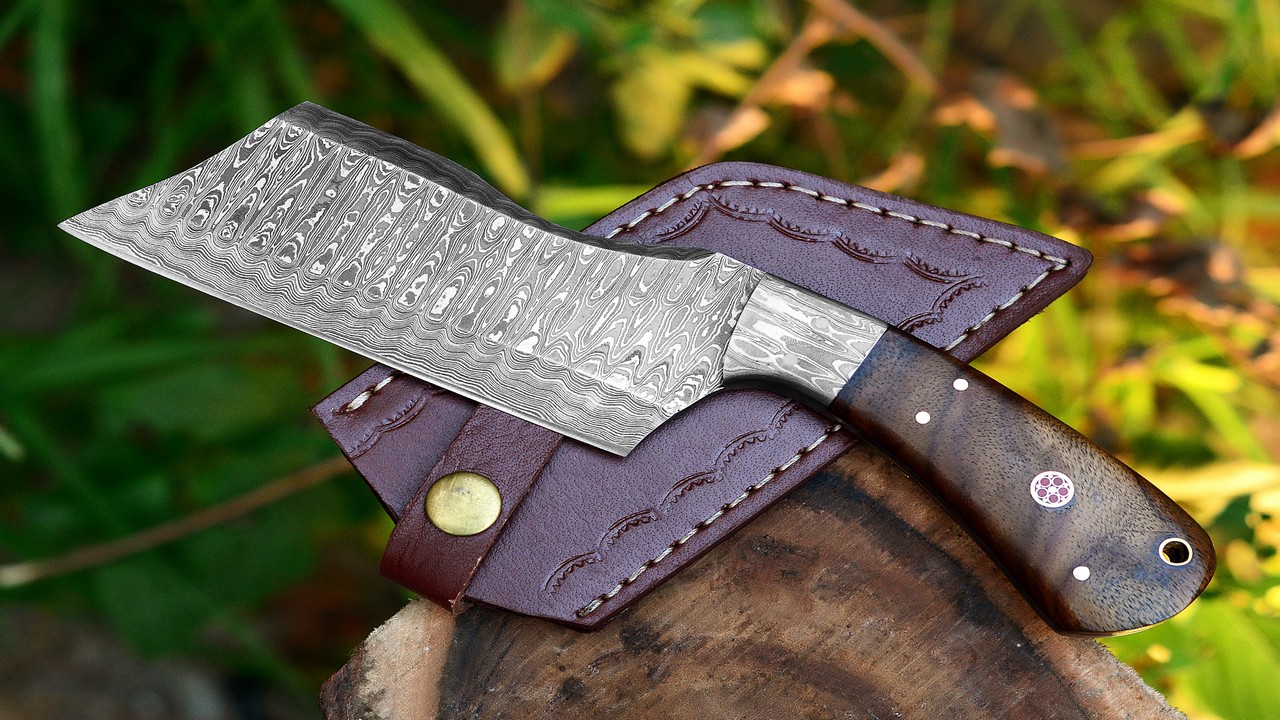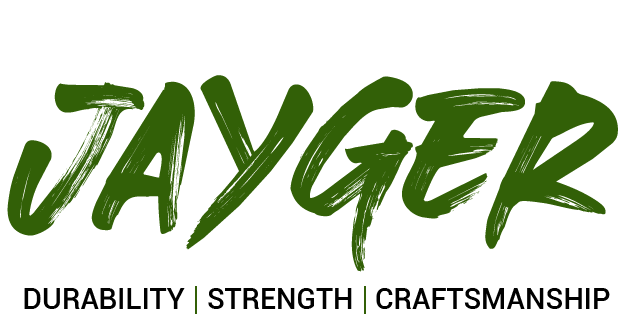Blog
How to Choose the Right Meat Cleaver?

A meat cleaver is a versatile and essential tool for any home cook or professional chef. Whether you’re looking for a full-sized cleaver for heavy-duty chopping or a mini cleaver for precision work, there are many options. We’ll help you navigate the different types of meat cleavers and find the perfect one for your kitchen needs.
Factors to Consider When Choosing a Meat Cleaver
When choosing a cleaver, there are several factors to consider:
- Consider the Blade Material
- Look for a Comfortable Handle.
- Determine the Blade Size and Weight
- Decide on a Full Tang or Partial Tang
- Check for Durability and Maintenance Requirements.
- Finally, consider any additional features, such as a meat cleaver sheath for storage.
Consider the Blade Material
When choosing a meat cleaver, the blade material is one of the most important factors to consider. The most common materials for cleaver meats are stainless steel, high-carbon steel, and ceramic. Stainless steel is durable and easy to maintain but may not hold a sharp edge as long as high carbon steel. High carbon steel is known for its sharpness and edge retention but requires more maintenance to prevent rust. Ceramic blades are incredibly sharp and lightweight but can be brittle and prone to chipping if not handled carefully. Consider your cooking needs and preferences when choosing the blade material for your meat cleaver.
Look for a Comfortable Handle
In addition to the blade material, the handle of your meat cleaver is also an essential factor to consider. Look for a handle that feels comfortable and provides a secure grip. Handles can be made from various materials, including wood, plastic, and metal. Wooden handles are traditional and give a natural grip but may require more maintenance to prevent cracking or warping. Plastic handles are lightweight and easy to clean but need more securely held. Metal handles are durable and easy to maintain but can become slippery if they get wet. Consider your preferences and cooking style when choosing the handle material for your cleaver.
Determine the Blade Size and Weight
When choosing a cleaver knife instead of chef knife, it’s essential to consider the size and weight of the blade. The length of the blade will depend on the type of meat you will be cutting and the force you will need to apply. A larger blade is better for cutting through more significant pieces of meat, while a smaller blade is better for precision cuts. The weight of the blade will also affect how easily you can cut through the meat. A heavier blade will require more force but is more effective at cutting through tough meat. Consider your strength and the types of meat you will be cutting when choosing the size and weight of your cleaver blade.
Decide on a Full Tang or Partial Tang
Another essential factor to consider when choosing a meat cleaver is whether you want a full tang or partial tang blade. A full tang blade means that the blade extends through the handle, providing more stability and strength. A partial tang blade only extends partway into the handle, making it lighter and easier to handle. Consider your preferences and the cutting you will do when deciding on a full or partial tang blade.
Check for Durability and Maintenance Requirements
When choosing a meat cleaver, it’s essential to consider its durability and maintenance requirements. Look for a chopper made from high-quality materials, such as stainless steel or carbon steel, that can withstand heavy use and frequent sharpening. Additionally, consider the maintenance requirements of the cleaver, such as whether it needs to be hand-washed or can be put in the dishwasher. Choosing a durable and easy-to-maintain meat cleaver will ensure it lasts for years.
Understanding Different Types of Meat Cleavers
Meat cleavers come in different shapes and sizes, each designed for specific tasks. The most common meat cleavers include the Chinese cleaver, the Western-style cleaver, and the mini cleaver steak knife.
The Chinese cleaver is a versatile tool that can be used for chopping, slicing, and dicing. The Western-style cleaver is heavier and thicker, making it ideal for chopping through bones and tougher cuts of meat.
The mini meat cleaver is a smaller version of the cleaver, perfect for more minor cuts of meat or uses in a home kitchen.
Understanding the different types of meat cleavers can help you choose the right one for your needs.
Key Features to Look for in a High-Quality Meat Cleaver
When choosing a meat cleaver, there are several key features to look for to ensure you are getting a high-quality tool:
- Consider the blade material. High-carbon stainless steel is a popular choice for its durability and resistance to rust and stains.
- Look at the blade thickness and weight. A thicker and heavier blade will be better for chopping through bones and tougher cuts of meat. The handle is also important, as it should provide a comfortable and secure grip.
- Consider the overall balance of the cleaver, as a well-balanced tool will be easier to use and less tiring on your hands and arms.
Tips for Finding the Perfect Balance and Weight
Finding the perfect balance and weight is crucial when choosing a suitable meat cleaver. A too-heavy or unbalanced cleaver can be challenging to control and may cause fatigue or strain on your hands and arms. Look for a cleaver with a handle that feels comfortable and secure in your hand and a blade that is thick enough to handle tough cuts of meat but not so heavy that it becomes unwieldy. Consider trying a few options to find the perfect balance and weight for your needs.
Evaluating Blade Material and Edge Retention
Another essential factor to consider when choosing a meat cleaver is the blade material and its ability to retain its edge. High-carbon stainless steel is a popular choice for meat cleavers as it is durable, rust-resistant, and holds a sharp edge well. However, some traditionalists prefer Damascus steel for its ability to maintain an even sharper edge, although it requires more maintenance to prevent rust. Ceramic blades are also an option, but they are more brittle and can chip or break if not handled carefully. Consider your personal preferences and needs when evaluating blade material and edge retention.
